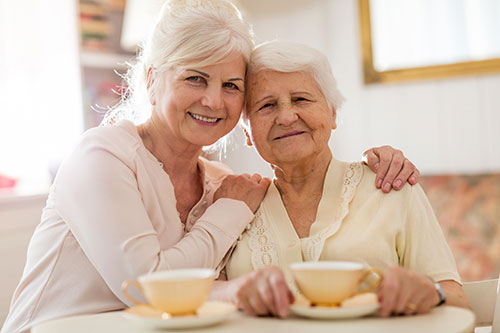New tools and techniques can improve the safety of a home, which can make caregiving a little easier. AARP’s article entitled “9 Items That Make Home Caregiving Easier” provides us with some tools designed to help caregivers ease the burden of daily challenges.
- Sit-to-stand toilet. A quarter of falls happen in the bathroom, so assistive toilet seats with adjustable handlebars and seat heights — for safe and stable toilet transfers — are great for those with weakness and instability issues. Medicare may cover the cost of this item if it is prescribed by the physician.
- Adjustable beds. Although pricey, these tools are a real investment in helping to adjust comfort levels with the push of a button. These beds can help create an upright position for eating and are a good option for preventing bedsores. They also allow for fast repositioning, and safer and faster transfers in and out of bed.
- Walk-in shower with handrails. These features make it easier for caregivers to help someone with dementia or other challenges to bathe. Walk-in showers have more room for a seat or bench and grab bars. Anti-slip flooring and faucets that regulate water flow and temperature to prevent scalding are helpful tools that should also be added.
- Motion-sensor lights. Wireless motion-sensor lights can illuminate dim areas, such as stairs and long hallways. These lights are battery-operated, have built-in magnets and double-sided adhesives and shut off after a short amount of inactive time, usually from 15 to 30 seconds.
- In-home cameras. Cameras can prevent a loved one from leaving a home or wandering off without a caregiver’s knowledge.
- GPS trackers. These devices let loved ones live an independent life, while letting caregivers know exactly where they are. This technology allows for real-time tracking, the setup of safe zones and custom alerts to let caregivers know someone has wandered off. They also may have two-way communication and the ability to give others, like additional family members, access to the same information.
- Monitoring apps. There are many digital apps that can be used as monitors, reminders and providers of useful information. Learn more about this and other “age-tech” at Age Tech Now.
- Customizable digital clocks. Choose clocks with large, easy-to-read displays, or voice capabilities. Some clocks let caregivers set reminders, such as “It is now Saturday afternoon.” Caregivers can program alarms, events, birthdays and holidays. Models with personalized voice reminders — for medication, appointments, and tasks — let the person being cared for hear the comforting voice of the caregiver.
- Support Groups & Memory Cafes. Support groups can provide much needed information and reassurance for family care partners. Memory Cafes give the person living with dementia and their care partner something fun to do together in an accessible, friendly environment. Learn more at Dementia Friendly Dallas online.
If you are a care partner to someone with dementia or other care needs, support is available. Contact your local chapter of the Alzheimer’s Association at https://www.alz.org.
Reference: AARP (Dec. 21, 2021) “9 Items That Make Home Caregiving Easier”




